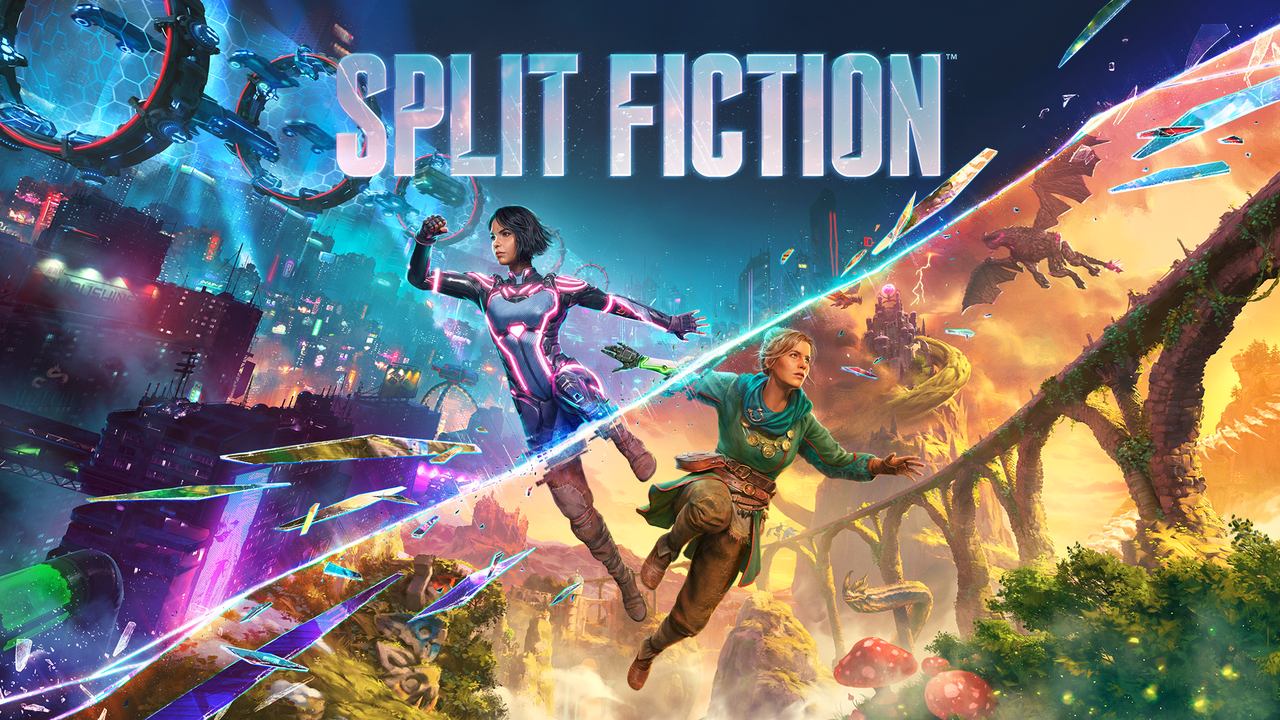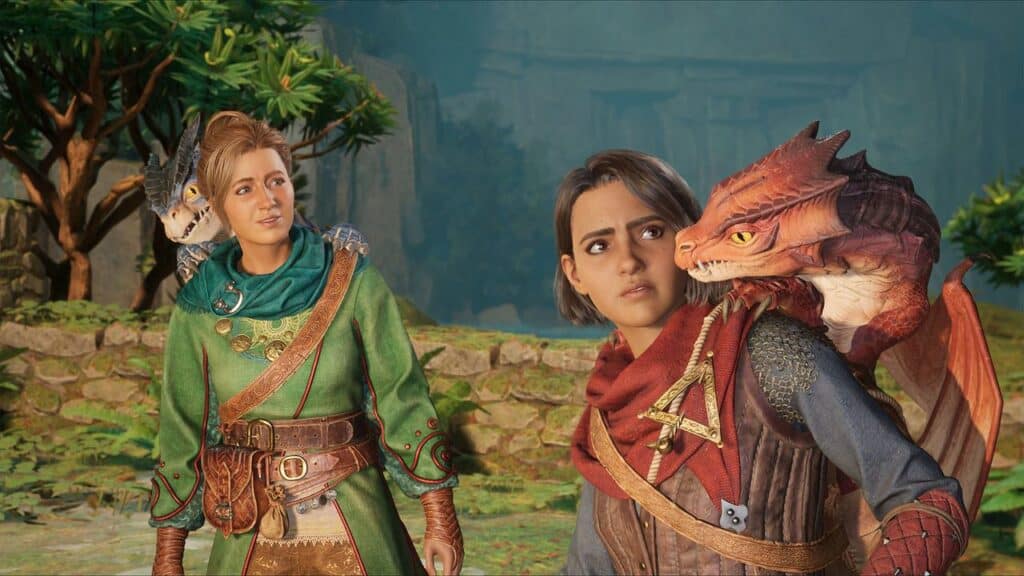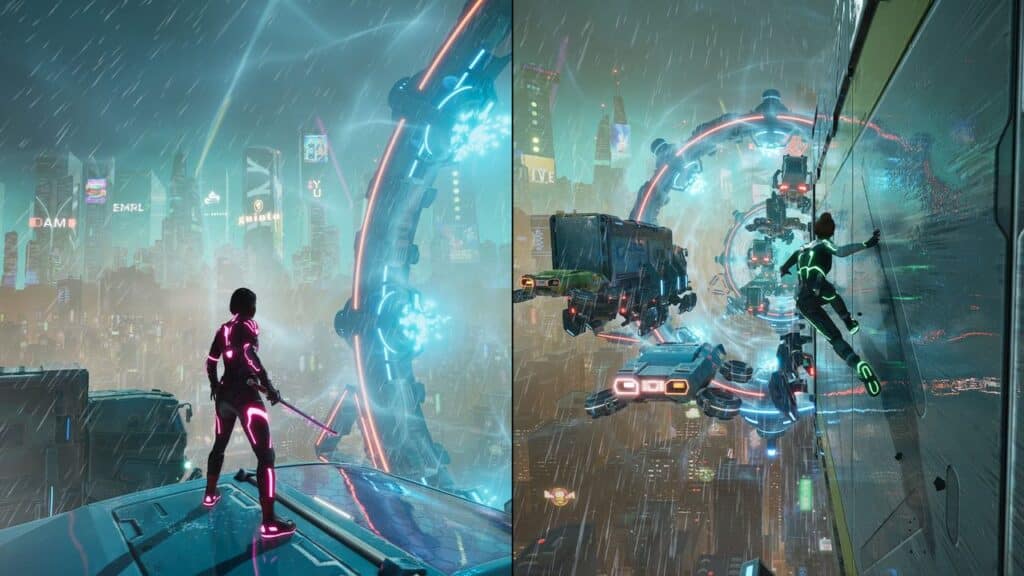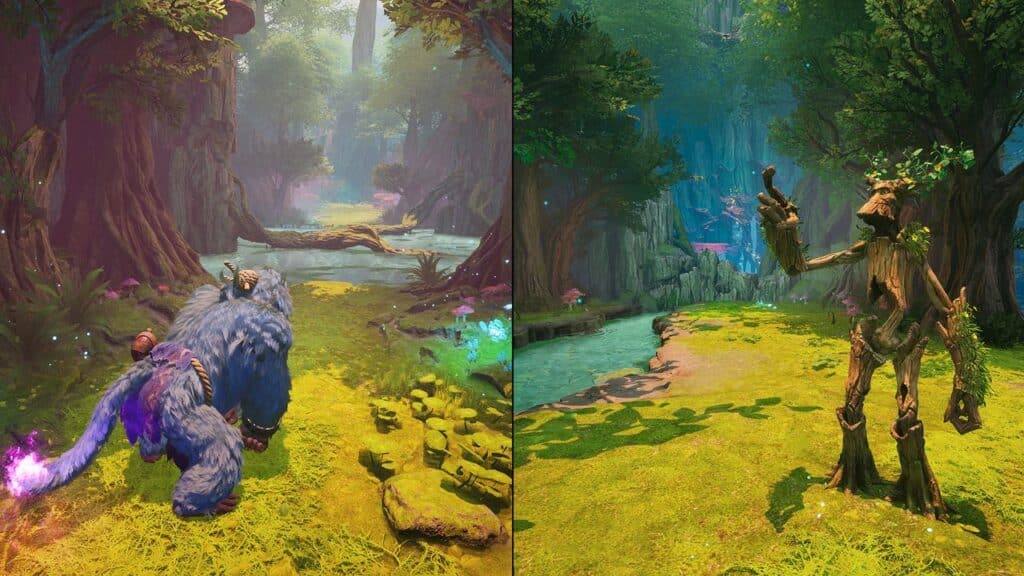
Co-op games work best when they strike the right balance between challenge and teamwork. Some let you breeze through with minimal coordination, while others demand constant communication and split-second timing. Split Fiction lands somewhere in between, constantly throwing new mechanics at you and forcing both players to adapt. It’s a game that keeps you on your toes, rewarding collaboration while occasionally testing your patience.
I played Split Fiction with my daughter, and it quickly became clear we had very different approaches. She rushed ahead without hesitation, activating every switch in sight, while I tried to process what was happening. This became especially obvious when we hit a level where one player had to shift gravity while the other swung across moving platforms. She had it figured out instantly, while I… let’s just say I slowed things down a bit. But once we finally got in sync, it felt like a real achievement.
That’s what makes Split Fiction work. Like It Takes Two, it never sticks to just one style. One level has you outrunning security drones in a cyberpunk city, the next you’re solving puzzles in a floating castle. The variety keeps things exciting, but does the game manage to tie it all together, or does it get lost in its own ambition?
An Unlikely Duo
Mio and Zoe didn’t sign up for an adventure—they just wanted to publish their books. Instead, they end up stuck inside a bizarre machine that transforms their stories into real, interactive worlds. Mio, a sci-fi writer, thinks in logic and precision. Zoe, a fantasy storyteller, dreams in big, imaginative ideas. Their personalities—and their worlds—clash in all the right ways, leading to some wildly different environments. One moment, they’re dodging laser turrets in a futuristic city, and the next, they’re soaring through the skies on a dragon.
The dynamic between Mio and Zoe is what makes the story engaging. Mio tends to overanalyze everything, while Zoe jumps in headfirst without a plan. At first, they struggle to see eye to eye, but as they work together to escape, their relationship develops naturally. Their journey is easy to get invested in—not because of the plot itself, but because their personalities make every moment feel alive.
Unfortunately, the same can’t be said for James Rader, the game’s supposed villain. He’s the head of the company behind the story-machine experiment, but his entire motivation revolves around… stealing book ideas? He pops up just enough to remind you he exists, but never feels like a real antagonist. Meanwhile, the actual villains within Mio and Zoe’s stories—rogue AIs, sci-fi bounty hunters, power-hungry wizards—are way more interesting. If the game had leaned more into them, the narrative could’ve been even stronger.
Despite that, Split Fiction keeps its momentum thanks to the sheer creativity of its world. The alternating sci-fi and fantasy settings make for a fun mix, and watching Mio and Zoe’s dynamic shift over time is a highlight. The main villain may not leave a lasting impression, but the adventure itself does.

A Constantly Shifting Gameplay Experience
Co-op games tend to reveal how well two people work together. Split Fiction is no exception. Some sections make you feel completely in sync, pulling off clever moves and solving puzzles effortlessly. Others will make you question why you ever thought this was a good idea. I had both experiences while playing with my daughter. She has a habit of rushing ahead, assuming I’ll catch up, which led to some hilarious (and frustrating) moments. A section involving gravity manipulation had us failing repeatedly, mostly because one of us (me) wasn’t reacting fast enough. When we finally pulled it off, though, it felt incredibly satisfying.
A Little Bit of Everything
The best part of Split Fiction is how often it changes things up. It never sticks to just one type of gameplay for too long. One level plays like a fast-paced action game, the next feels like a classic platformer, and then suddenly you’re inside a pinball machine where one player controls the flippers while the other gets bounced around. Some sections lean into puzzles, others focus on combat, and a few throw in completely unexpected mechanics. The constant reinvention keeps it interesting, even if some ideas land better than others.
That said, not every mechanic is a hit. Some sections drag on a little longer than necessary, and a few controls feel a bit clunky—especially a particular flying sequence that felt more like fighting the game than playing it. But whenever something overstays its welcome, the game pivots to something new, keeping things from feeling stale.
The Key to Success: Communication
If there’s one thing Split Fiction demands, it’s teamwork. Many puzzles and platforming sequences require both players to be completely in sync. If you don’t talk things through, expect a lot of accidental failures. My daughter and I had several moments where we had completely different strategies in mind—usually ending in both of us falling off ledges or missing our cues. More than once, we found ourselves blaming each other, only to realize neither of us was actually paying attention.
But that’s what makes co-op games like this fun. The frustration is temporary, but the moments of success feel earned. When Split Fiction works, it really works. And even when it doesn’t, the chaos is still entertaining.

A Tale of Two Art Styles
One of Split Fiction’s biggest strengths is its visuals. Mio’s sci-fi settings glow with neon lights and towering metal structures, while Zoe’s fantasy worlds feel more inviting, packed with rich colours and detailed scenery. The way the game moves between them keeps things fresh, making sure no environment ever feels overused.
Mio’s reserved nature shows in her precise movements, while Zoe’s energy comes through in her bigger, more animated reactions. The voice work brings both characters to life, making their personalities feel distinct and believable.
The soundtrack blends seamlessly with each setting, shifting between orchestral melodies and electronic beats without ever feeling forced. Sound design adds extra texture, from the soft crunch of footsteps on dirt to the hum of machines in the sci-fi levels.
With so many shifting gameplay mechanics and changing level layouts, the camera sometimes struggles to keep up. This isn’t a major issue, but in faster platforming sections, it can make precise jumps trickier than they need to be.

A Co-Op Adventure Worth the Ride
When the credits rolled, I asked my daughter if she’d play Split Fiction again. Without hesitation, she said yes. That’s probably the best compliment a game like this can get. Even when things got chaotic—even when we got frustrated at each other—it was always fun.
Hazelight Studios has taken everything that made It Takes Two great and pushed it even further. The gameplay variety is staggering, the world is beautifully designed, and the co-op mechanics make every challenge feel rewarding. It’s not without flaws—the villain is weak, some sections drag, and the camera can be a pain—but those issues don’t take away from what makes the game special.
If you’ve got a co-op partner willing to stick with you through the chaos, Split Fiction is absolutely worth playing. Just be ready for a little friendly yelling along the way.
Split Fiction

Summary
Split Fiction throws you into a fast-paced co-op adventure packed with creative mechanics, ever-changing gameplay, and memorable character moments. Jumping between sci-fi and fantasy worlds keeps things visually fresh, and no two levels play the same. The villain doesn’t leave much of an impact, and a few sections run longer than they should, but the co-op challenges and constant surprises make it an easy recommendation for anyone who loves teamwork-driven games.
As always, remember to follow us on our social media platforms (e.g., Threads, X (Twitter), Bluesky, YouTube, and Facebook) to stay up-to-date with the latest news. This website contains affiliate links. We may receive a commission when you click on these links and make a purchase, at no extra cost to you. We are an independent site, and the opinions expressed here are our own.










Thanks for this review, Jon! I’ve been on the fence for this game. Funny how the contrast between you and your daughter’s gaming style seems to match that of Mio and Zoe’s personalities. I’m looking forward to playing this on the Switch 2 with my husband; our gaming styles also differ so it sounds like some fun chaos is in my future!